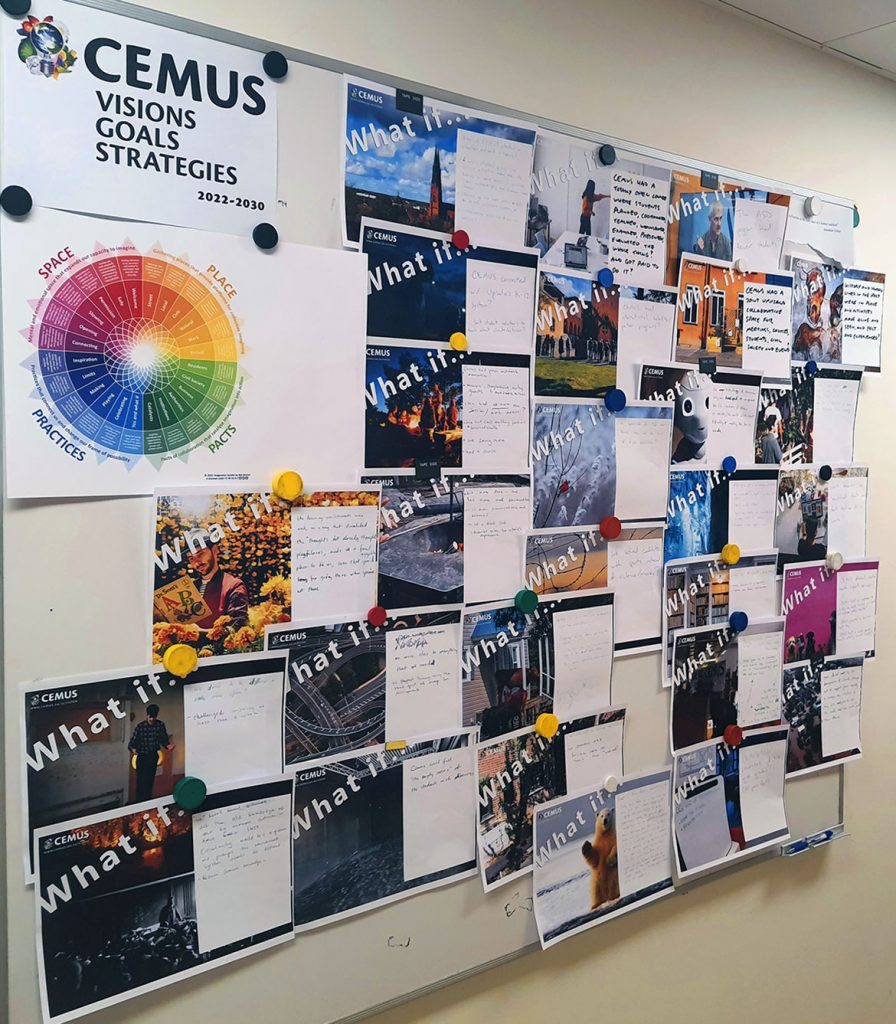During 2022 CEMUS invites you – staff and students at Uppsala University and SLU as well as engaged citizens here in Uppsala and the world – to a collaborative process to workshop and create visions, goals and strategies for CEMUS 2025 and 2030! Warmly welcome to the final meeting in CEMUS Library NEW DATE May 11 NEW TIME kl. 14.15-16.00!
Upcoming meetings 2022

March 14 kl. 13.15-15.00 in CEMUS Library
Mapping the world around us (planet, world, Uppsala, UU, SLU and CEMUS) and CEMUS visions (reason for being)

March 28 kl. 13.15-15.00 in CEMUS Library
Ideation on goals and the process of coming up with and writing meaningful, active and inspiring goals for CEMUS 2025 – 2030

April 20 kl. 13.15-15.00 in CEMUS Library
Finalizing goals CEMUS 2025 – 2030 and connecting strategies to achieve goals

NEW DATE & TIME May 11 kl. 14.15-16.00 in CEMUS Library
Finalizing strategies to goals CEMUS 2025 – 2030 and presenting final drafts and last changes to texts
Previous meetings
December 8, 2021
Net CEMUS 2030 workshop social
This session was based on Rob Hopkins book, lecture at CEMUS spring 2021 and work https://www.robhopkins.net/ on processes, workshops to imagine and work on changing a local place, organization, business or situation. Watch the lecture below.

Analyzing the world around us
– CEMUS, the subject areas, the university, Uppsala, the world and the future
The concept of Environment and Development
One basic principle from the very beginning was that issues of global survival should be approached in an integrated manner, where both environment and development are fundamental components; but more importantly, that the study of the very interface between these areas is the most central of all. “Environment and development” is here viewed as “one” integrated concept and not as two separate areas that are studied in parallel. Many institutions that offer courses in sustainable development have a disciplinary basis in either the area of environment or the area of development studies, and it can then easily happen that the courses get a bias towards one of these areas. The strength of Cemus is that the focus—and the curiosity—is almost always directed towards the interface and integration of environment and development. Cemus’ course titles testify to this—often unconventional titles that cross boundaries, and are not constrained by what is usually offered by conventional disciplines. It is also important to note that the “development” dimension does comprises as much an examination of our own Western societies’ as it looks towards societies in the South.What is education for? The History of Cemus by Niclas Hällström, p. 28, 2011

